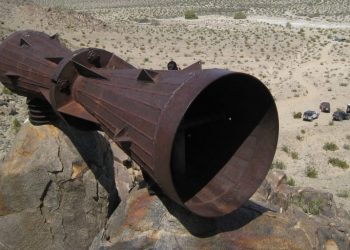Baalbek, an ancient site steeped in mystery and wonder, is located in present-day Lebanon. Known as Heliopolis during Roman times, this awe-inspiring complex features massive megalithic stones weighing more than 1,600 tons, which continue to baffle experts. Although some elements of the site can be attributed to Roman construction, the true age and origins of Baalbek remain uncertain. Nonetheless, one thing is; Baalbek’s megalithic stones are a true ancient mystery.
Theories range from a Phoenician sanctuary dedicated to the god Baal to a controversial, out-of-place ancient site dating back over 20,000 years. Baalbek’s incredible engineering, coupled with its enigmatic history, captures the imagination and invites further exploration into the secrets of our past.
Baalbek’s Inexplicable Origins
Ancient sites across the globe, such as Baalbek in modern-day Lebanon, defy explanation with their seemingly impossible construction. While the Romans contributed to some parts of the site, the origins of the massive foundation stones, weighing more than 1,600 tons, remain a mystery and date to times long before the ancient Romans.
The Megalithic Puzzle of the Past
Archaeologists are perplexed by the methods used to quarry, lift, and interlock giant stone blocks weighing between 10 and 200 tons at ancient sites like Puma Punku, Teotihuacan, Sacsayhuaman, Ollantaytambo, and Baalbek. Without advanced technology, how did these ancient cultures achieve such incredible feats?
Lost Technologies of the Ancients?
Speculation suggests that ancient people may have possessed advanced technology, now lost to time, which enabled them to construct these remarkable sites. Experts, including engineers and architects, are endlessly fascinated by these ancient achievements.

Baalbek’s Megalithic Stones: A Sacred Site Shrouded in Mystery
Baalbek, or Heliopolis, is one of the most impressive ancient sites, with its massive stone blocks posing a great enigma for archaeologists. The true age of this sacred site is still debated, with mainstream researchers suggesting it was a Phoenician sanctuary dedicated to the god Baal, while others believe it could date back over 20,000 years.
The Trilithon: A Monumental Challenge to Conventional Wisdom
The Trilithon, a platform featuring three colossal blocks weighing 1,000 and 2,000 tons, defies explanation. How did ancient people quarry, transport, and place these immense stones without modern technology? The precision with which these megaliths were positioned is astonishing, similar to other ancient sites in South America.
What is the heaviest stone at Baalbek?
The most interesting question concerning this amazing ancient temple concerns its largest (heaviest) stone block. What is the heaviest stone at Baalbek? The Forgotten Stone of Baalbek, a colossal monolith weighing a staggering 1,650 tons, adds another layer of intrigue to this already enigmatic site as the heaviest stone. Discovered partially buried, this immense block’s dimensions and weight make it the largest known stone quarried from antiquity.
Its unfinished state raises tantalizing questions about the methods and motivations of the ancient builders, as well as the potential existence of lost technologies. The Forgotten Stone serves as a testament to the astounding capabilities of ancient civilizations and challenges our understanding of history.
Have something to add? Visit Curiosmos on Facebook. Join the discussion in our mobile Telegram group.











